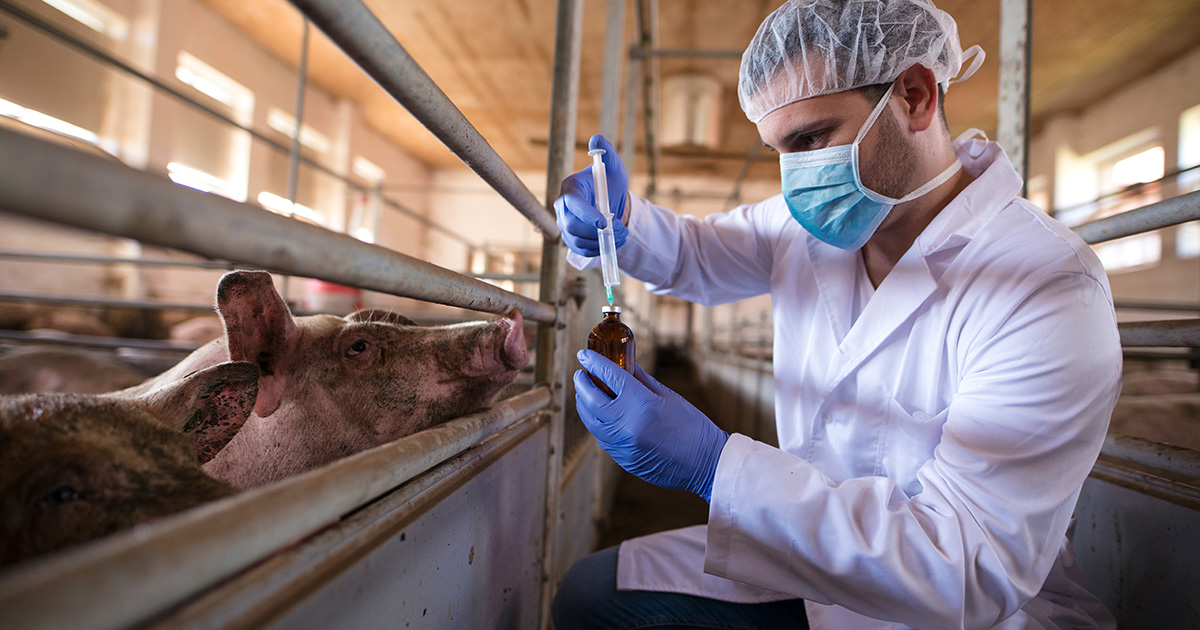As in the healthcare sector, logistics and supply chain management are key to the Animal Health and Nutrition industry. Especially in a market such as Brazil, where the veterinary sector has experienced great growth and is a reference worldwide when it comes to livestock and pet issues.
On the one hand, according to Abinpet (Brazilian Industrial Association of Pet Products), Brazil has the second-largest population of dogs, cats, songbirds, and ornamental birds in the world, and it is the third-largest country by total pet population, with 54 million dogs, 24 million cats, 19 million fish and 40 million birds, among other animals.
Moreover, on the other hand, it also counts with the world's largest cattle herd, and it is the world's largest exporter of this type of meat, as well as being among the world's largest producers and exporters of poultry and pigs, for example, and having one of the largest horse populations in the world.
Agro-industry is composed of agricultural inputs, agricultural production, agro-industrial processing, and services segments. Agro-industry accounts for 23% of the national GDP, and it is divided between the agricultural (67%) and livestock (33%) sectors.
In other words, the size of the Brazilian veterinary sector is monumental, and the efficiency of logistics operations is vital for the well-being of both the animals and the companies in the sector, in all links of the chain.
Animal health logistics
Animal nutrition and health operations present quality requirements and technical controls, which are very similar to those for the human health market, since the products are used for the same purpose: to prevent and cure diseases.
And this is a scenario with many actors. From the industry, all the way through the logistics operator and reach the destination, many procedures, areas, and companies are involved.
A well-structured process from the beginning - during the incoming materials flow and purchase orders - to delivery at destination is required, as well as the last mile to the final consumer, technology for automation, warehousing and inventory management systems, process traceability, and of course, transportation infrastructure.
Therefore, outsourced logistics operators carry out the warehousing and transportation operations of finished products for production animals and pets for most Brazilian companies.
Such is the case of Ourofino, the largest Brazilian veterinary company, which relies on Solistica as a logistics partner. The company ships finished products directly from the Cravinhos (Sao Paulo State) factory to six advanced distribution centers managed by Solistica, where they are received, warehoused, invoiced, segregated and shipped to customers. During this whole process, the company has full visibility of it and monitors the end-to-end chain, ensuring auditable results, considering regulatory issues, pharmaceutical logistics and accounting matters.
Ceva Animal Health is another example where quality drives operations, for which all procedures and good warehousing and transportation practices are strictly followed, ensuring the integrity of the products. In this case, Solistica as a logistics operator also meets all regulatory and quality standards to ensure the perfect preservation of the products during the period in which they stay in the warehouse.
As a strategic partner, Solistica begins by understanding each business and its main challenges in order to develop the ideal logistics project for it. That is, making systems and processes more flexible and customized to meet your specific needs. In addition, after more than 20 years of experience in the animal health and nutrition sector, it counts with a structure dedicated to serving companies in these segments, and a team of specialists in each of them, who work to develop a solution that adds value to the business.
Veterinary logistics in the Brazilian context
In Brazil, supply chains in this sector have greatly evolved in terms of technologies and processes aiming to improve efficiency and reduce costs. This provides to the system a high level of complexity, added by the fact that the Brazilian territory is often difficult to access and that its territorial infrastructure that is largely obsolete.
In other words, the distribution of veterinary products in Brazil is complex. For the livestock input logistics sector, concentrations in specialized macro regions dilute warehousing and transportation costs, but it creates bottlenecks due to the lack of transportation infrastructure in the country, thus making the level of planning vital.
In addition, Brazil is a country with complex tax and labor legislation, particularly in this sector, which is subject to regulations from various ministries, agencies, secretariats, and other governmental bodies.
The veterinary products industry and its logistics chain are regulated and supervised by the Ministry of Agriculture, Livestock and Supply (MAPA), and the requirements to ensure the efficiency of the chain and the quality of the products begin with the implementation of Good Warehousing, Distribution and Transportation Practices, which require a high level of specialization and technical compliance.
For logistics operators, these Best Practices include having a quality system in place and monitoring and controlling the effectiveness of all critical processes, as well as:
- Employees' qualification
- Suppliers' approval
- Conduction of system and process audits
- Response to customer complaints
- Ensuring that facilities and equipment comply with regulatory agency requirements
- Promotion of continuous improvement
Quality in the management of the entire supply chain
The main objective in the Animal Nutrition and Health logistics chain is to ensure a reliable supply of products, delivering the highest possible quality and safety of medicines, food, etc., maintaining their attributes and effectiveness.
Therefore, companies in the industry must have quality control throughout the chain to ensure compliance with safety protocols, careful handling, attention to cleaning procedures, and optimal transportation conditions, with proper warehousing and disposal.
Each type of product has specific characteristics and needs. When placed in the warehouse, most items are in climate-controlled environments, and the cold chain is mostly followed for transportation. Some good are even dangerous and so require special transportation.
Some products require different warehousing and transport temperatures, especially vaccines, which should be kept in the warehouse between 2 °C and 8 °C (around 35 °F and 46 °F) and transported in cold chain.
Solistica is experienced in vaccines warehousing and distribution throughout Brazil, and therefore, counts with a cold chain, which begins as the vaccine leaves the industry, until it finally reaches the resale refrigerator.
In addition, as an example, the vaccines against foot-and-mouth disease and rabies of another large Brazilian company of this industry called Mars Petcare, before being sent to the recipient, must undergo a holographic security sealing process to control the doses marketed and provide security against counterfeiting.
Solistica places about 276,000 seals per day. In the last three years, an average of 390 million vaccines were sealed.
Raw materials, on time and in good condition
For animal medicine or nutrition companies, raw material management is critical. Most raw materials and active ingredients require temperature and/or humidity control according to material specifications throughout the process.
Once more, an extremely robust process needs to be monitored and assured. It also must be able of receiving inputs in good integrity and quality throughout the supply chain, from the import, unloading and transportation to the company's manufacturing plant.
Technology to anticipate demand and provide traceability
According to the standards of the Brazilian veterinary market, aiming to ensure traceability and quality in the operational processes, it is necessary to have an efficient control of: stock, "shelf life", batches/outputs, condition, addresses/positions, and carriers.
It also establishes the need to count with a traceability program, which takes into account how to trace the batch or product from the origin of the raw materials and the packaging, which was used, to the final product destination.
Likewise, logistics operators are expected to ensure that warehousing and transportation activities are able to keep traceability, stock control, and volume identification for dispatch and shipment to carriers, following the guidelines informed by the laboratories.
Therefore, in order to ensure the fulfillment of every demand, Solistica works with long, medium, and short terms, as well as online production planning. Thus, capacity is sized through forecasting, and adjusted accordingly.
Technology allows assertively foreseeing future demand and getting the right product at the right time and in the right quantity, making it possible to deliver what customers need.
The company applies statistical logic with machine learning, scaling in a more accurate way according to seasonality and peaks throughout the month. In addition, the 'Control Tower' allows operations to be managed in real time, and resources and vehicles to be reallocated for a demand-synchronized service.
Solistica also counts with a digital platform technology that allows full traceability of deliveries in real time. The tool allows customers to have visibility of the entire order cycle, and in addition to tracking deliveries, a feature that generates reports and visualizes operational indicators for management is available.
Solistica works with its own management systems, fully customizable and adaptable to the client's systems. In addition, focusing on traceability, an application was developed so that partner drivers can use it during transport. The information generated by the app is synchronized with a system available to the customer in order to track their delivery orders in real time.
Undoubtedly, the level of demand in this industry is growing and will surely continue to do so. At Solistica, we strive to rise to the challenge.



.jpg)


